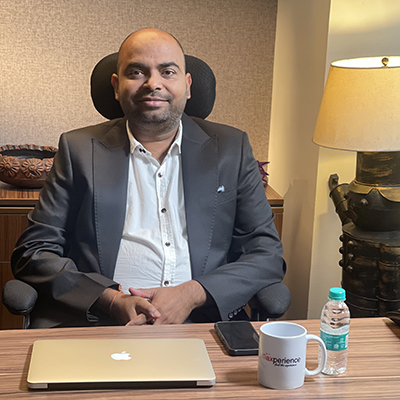Breaking Down Barriers: The Power of a Flat Organisational Structure | Arvind Balan | Co-Founder & CEO | Maxperience
 We are truly living in the age of constant innovation, be it technological or otherwise. It feels like we’re changing and evolving every day and it hasn’t been more important to keep up with these changes ever before. Being in the creative field, I can vouch for the fact that it is one of the most fast-paced spaces, but also one which always adapts itself with each step of the evolution. How quickly and efficiently new technology is integrated into stand-out campaigns and day-to-day executions is a staggering proof of this.
We are truly living in the age of constant innovation, be it technological or otherwise. It feels like we’re changing and evolving every day and it hasn’t been more important to keep up with these changes ever before. Being in the creative field, I can vouch for the fact that it is one of the most fast-paced spaces, but also one which always adapts itself with each step of the evolution. How quickly and efficiently new technology is integrated into stand-out campaigns and day-to-day executions is a staggering proof of this.
But what does this evolution translate to on an organisational and operational level?
I believe that the flat organisational structure is the workspace evolution. Yes, it is nothing new per se and brands might have already been doing it for a while now. But it truly is the way ahead for a marketing organisation, where each project requires multiple teams to work together. A flat structure can encourage cross-functional collaboration and eliminate the silos that can hinder project success. By removing layers of management, a flat structure promotes a more flexible and responsive work environment, allowing for quick decision-making and
adaptability.
One of the primary benefits of a flat organisational structure in a marketing agency is that it fosters a culture of innovation and creativity. By encouraging direct and open communication among team members, it promotes the exchange of ideas and promotes a collaborative work environment. This is how unique and out-of-the-box ideas are born that can set a campaign apart from the competition.
In addition, a flat structure can also improve employee morale and job satisfaction. It’s a domino effect – people have more control over their work, which helps in developing a much needed sense of ownership, hence creating a more engaging and fulfilling work environment. This, in turn, can lead to better employee retention rates, as well as attract top talent to the organisation.
Over the recent years, many well-known companies have employed a flat organisational structure, including the tech giant, Google, and our homegrown food-delivery app, Zomato. Zomato’s CEO & MD, Deepinder Goyal even credited the company’s flat structure for enabling rapid growth and innovation. By empowering employees to take ownership of their work and contribute their ideas, Zomato has been able to stay ahead of the curve in a highly competitive industry.
I am such an ardent advocate of this organisational setup because we’ve experienced its positive impacts firsthand at Maxperience many times over. By removing the barriers between management and employees, a flat structure has created a more collaborative and team-oriented work environment. Moreover, being an experiential marketing agency, we can see the results of this seamless cohesion in real-time when our events come together. My team and I
have consciously tried to foster a sense of community among employees and encourage everyone to work together towards a common goal.
I truly believe that our exponential growth in the last 4 years would have been nowhere near if our teams hadn’t been exposed to a freeflow of ideas, an unmatched collaborative and creative space, and a strong sense of belonging. These are the key to any project’s success, and flat organisational structure is the key to it all!


